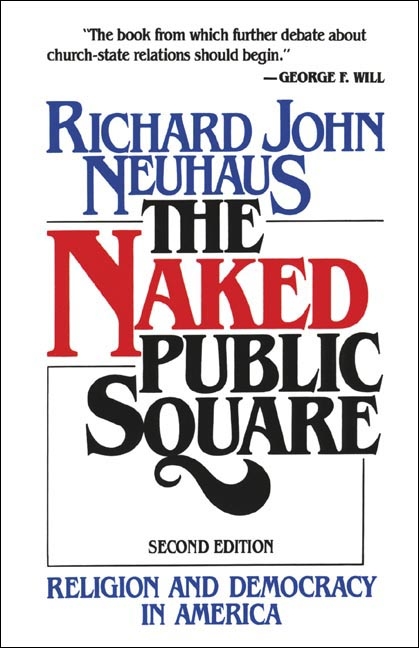In 2021, the share of adults who belonged to a church, synagogue, or mosque dropped below 50% for the first time in recent history.1https://news.gallup.com/poll/341963/church-membership-falls-below-majority-first-time.aspx Those who would formally identify with a religion were no longer the majority, at least according to polls. At the same time, the share of those who were identifying as “nones” (a category that includes atheists, agnostics, and nothing in particular), was growing at a rapid rate, with as much as 40% of Generation Z and increasing levels in all age groups.2https://religioninpublic.blog/2021/07/19/generation-z-and-religion-the-most-recent-data/
However, this did not mean that religion was disappearing, but rather being transformed. As religious scholar Tara Isabella Burton has noted in her study of secular religious practice, the devotion that used to be given to formal religion was now placed on new trends such as health and wellness culture or sexual libertinism.3Tara Isabella Burton, Strange Rites: New Religions for a Godless World (New York, NY: Public Affairs, 2020). We could also add political affiliation, as polls now show that significant numbers of individuals would be more unhappy if their child married a person of a different political party rather than a different faith.4https://research.lifeway.com/2019/03/07/differing-politics-more-than-religion-raises-issues-for-potential-marriages/
In the face of this new religious landscape, it can be helpful to consider the ways that Christians in recent years have thought about political engagement. It would take too long to explore every framework offered by Christians throughout history for how to engage the world. The classic models like Augustine’s Two Cities (which features prominently in Josh Wester’s article on faith and secularism), Luther’s Two Kingdoms, or Kuyper’s concept of Sphere Sovereignty are all incredibly helpful and worthy of attention, yet they also all operated in a world where religious faith was central to public life. That is less the case in recent years. Thus, it is helpful to consider other recent examples of what it means to engage this new secularized public square.
Richard John Neuhaus
For this task, there is no more classic work than Richard John Neuhaus’ The Naked Public Square. Writing in the heyday of the Religious Right, Neuhaus seeks to correct the notion brought forward by those who would limit religion’s influence in the public arena. Rejecting the value-laden arguments of religion, these proponents of secularism want not a neutral public square, which might be commendable, but rather a neutered public square where religion has no place.
Neuhaus’ response is not to say that religion can be neutral, but rather to refute that the public square can ever truly be naked. A choice to exclude religious arguments is a thumb on the scale of the bounds of discourse, and this is a departure from the traditional understanding of religion’s role in democracy. His classic work, which is structured more as a series of essays with recurring themes, helps to highlight the inherent reality that in matters of such intense debate, there is no such thing as neutrality.
Stanley Hauerwas and William Willimon
Writing at the end of the 1980s, Stanley Hauerwas and William Willimon offered their own response to the changing culture around them and the public-facing Christian political activity. They argue that the church is a colony in a foreign culture. It functions as a beachhead for the coming kingdom, and it is the place where deep discipleship occurs. If Neuhaus’ work focused on the realm of wider culture as the site of public engagement, Hauerwas and Willimon locate the place of preeminence in the gathered assembly of the believers.
The Anabaptist tendencies of the work incline it to be critical of political engagement like that of Falwell’s Moral Majority or the Christian Coalition. And yet it does see a need for engaging the rapidly changing public square. However, rather than beginning with mobilization and legislation, the authors begin with spiritual formation. The political declaration of the church that “Jesus is Lord” is a call to discipleship and formation into kingdom citizens, which means that the church as the church is a political entity when it is inculcating the virtues of Christ through its liturgy and spiritual practices. The church is the locus of political activity for the Christian, not the town square.
Jonathan Leeman
Writing decades later, Baptist political theologian Jonathan Leeman offers a synthesis of the best contributions from works such as Neuhaus, Hauerwas, and Willimon in a decidedly evangelical framework. Where all three agree is that the culture has rapidly secularized and that the public square is no longer as hospitable to Christianity as it once was. Leeman, like Neuhaus, rejects the concept of a neutral public square. His How the Nations Rage recognizes that the contests in the public square are between competing gods, not matters of unimportance. Like David before Goliath, or between Elisha and the prophets of Baal on Mt. Carmel, this is a contest to see which god will win. To pretend that we are disinterested participants and not warriors for our God is an inaccurate representation of what is occurring when we engage others.
At the same time, Leeman does not go so far as to say that the Christian’s political activity is grounded in legislation passed or court cases decided. It is a decidedly Baptistic framework grounded in the local church, a point at which Hauerwas and Willimon would agree. The local church, when rightly forming disciples, will be creating those who are able to do the work of articulating the truth of the gospel and its moral demands in the public square.
While Leeman would disagree with some of the proposals offered by Hauerwas and Willimon, his framework does agree that the church’s ecclesiological work is also its political work. But it approaches this from a decidedly evangelical perspective which sees a primary part of that work as evangelism and regeneration of hearts. As such, it provides a helpful model for evangelicals seeking to bridge the teaching they experience on Sunday with their life in the public square on Monday through Saturday.
The major point at which Leeman’s book helps for understanding the cultural moment and how Christians should engage is his approach of interacting with opposing worldviews. Leeman recognizes that neutrality is a myth, and that the public square was never naked. Every time we enter, we do so on behalf of our gods, whether that is the God of Scripture or the god of personal autonomy or sexual liberation. In a secular moment where there is a profusion of religion, even if organized religion is declining, Leeman reminds Christians that as ambassadors of the kingdom we are always representing and advancing the work of the King. While that language may seem oppositional (it is), and may strike some as too pugilistic (in the line of culture wars mentality), it does capture the truth that the public square is a battleground of ideas and ideologies.
Though evangelical Christians recognize that the ultimate battle has been fought and that the rulers of this world are living on borrowed time, that does not diminish the reality that we are actively engaged in combat not against flesh and blood but against powers, authorities, and spiritual darkness (Eph. 6:12).
All three of these models offer the church something useful, whether a recognition of the reality of a public square that is never naked, the formational power of the church, or the battle for the public square. Christians should not see in them oppositional models, but rather pieces of the larger project of what it looks like to interact with this new religious landscape. Luckily, the model for engaging secularism is the same as it was for engaging paganism: offer the truth of the gospel to those deceived by sin and provide discipleship and formation for those in the local church. Secularism may be a new moment for the American church, but the task remains the same.










